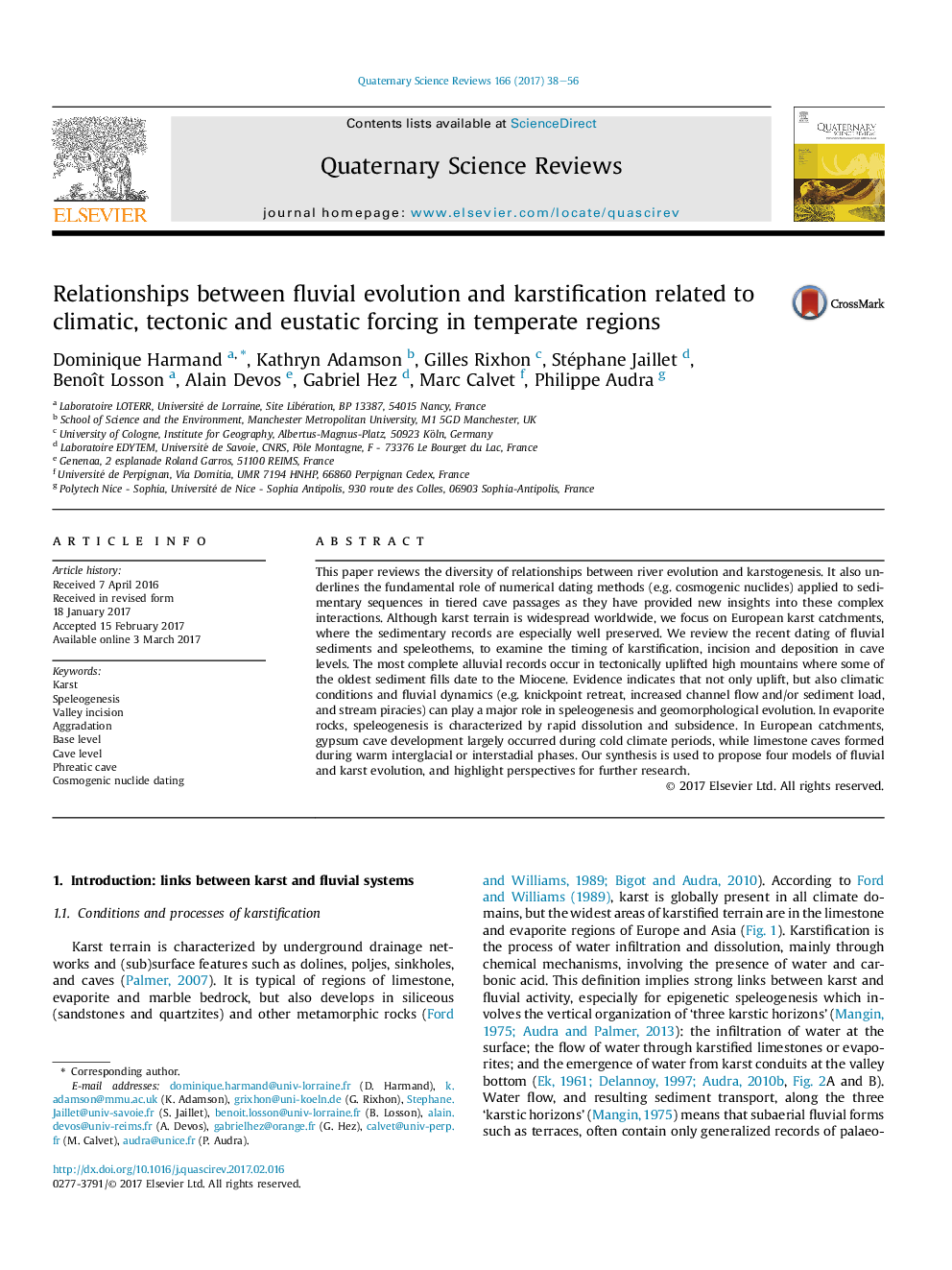| Article ID | Journal | Published Year | Pages | File Type |
|---|---|---|---|---|
| 5786713 | Quaternary Science Reviews | 2017 | 19 Pages |
â¢In temperate regions alluvium trapped in karst systems are well preserved and useful.â¢Tectonic, climate and eustasy: main forcings on river evolution and karstogenesis.â¢Numerical dating methods gave new insights into diverse river/karst relationships.â¢In evaporites, speleogenesis is characterized by rapid dissolution and subsidence.â¢We propose four models of fluvial/karst evolution, with new research perspectives.
This paper reviews the diversity of relationships between river evolution and karstogenesis. It also underlines the fundamental role of numerical dating methods (e.g. cosmogenic nuclides) applied to sedimentary sequences in tiered cave passages as they have provided new insights into these complex interactions. Although karst terrain is widespread worldwide, we focus on European karst catchments, where the sedimentary records are especially well preserved. We review the recent dating of fluvial sediments and speleothems, to examine the timing of karstification, incision and deposition in cave levels. The most complete alluvial records occur in tectonically uplifted high mountains where some of the oldest sediment fills date to the Miocene. Evidence indicates that not only uplift, but also climatic conditions and fluvial dynamics (e.g. knickpoint retreat, increased channel flow and/or sediment load, and stream piracies) can play a major role in speleogenesis and geomorphological evolution. In evaporite rocks, speleogenesis is characterized by rapid dissolution and subsidence. In European catchments, gypsum cave development largely occurred during cold climate periods, while limestone caves formed during warm interglacial or interstadial phases. Our synthesis is used to propose four models of fluvial and karst evolution, and highlight perspectives for further research.
